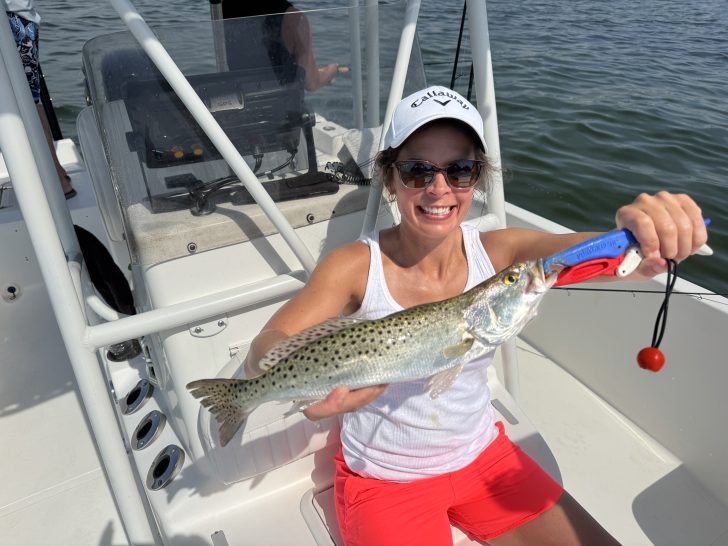Shoals in our oceans and waterways are magnets for many species of fish. They attract baitfish which, in turn, attract predator fish of all sizes. In Tampa Bay, we have natural shoals, and we also have man-made shoals. Shoals are rises in the seabed floor that can raise up sometimes just below the water’s surface and sometimes above the water’s surface. Sandbars are a type of shoal that also attract fish. Natural shoals are formed by the currents, and the man-made shoals can be from dredging channels in the Bay and depositing it in a line forming a shoal that can be made of varied materials, one of which is limestone. Limestone and rock attract grouper, snapper, mackerel and even king mackerel, especially along the shipping channels running up into Tampa Bay from the Gulf. All the channels and the shoals (spoil areas) along the edges of the channels can produce fish. B Cut and Port Manatee channel are areas that can produce some whopper fish.
Now, shallower areas like sandbars, many times, will have lush grass as they drop down to the depths in Tampa Bay. There are many sandbars inside Tampa Bay from the mouth of the Bay all the way to the northernmost part of the Bay. Many of these sandbars and underwater shoals will also have oysters, coral and shell on them which attract a variety of fish from small trout to the largest of tarpon, so there is something for everyone.
What is nice about the underwater shoals is that they are not obvious fishing spots. These are spots that you will have to find by exploring and using charts to find. Once you find a productive shoal, it will usually repeat every year with the seasons. Take note of what you’re catching, the time of year and water temperatures, since these factors are key for that spot for the fish. Also, that same shoal or sandbar will hold different species during different times of the year, but will have a seasonal pattern. Keep notes, because once you figure out that pattern and what fish are there at that time, it will usually repeat every year.
Shoals will have deeper water around them, and sandbars will drop off into deeper water. What this means is that you can catch very large fish in shallow water, since it is adjacent, many times, to open water. For instance, the sandbar running from Pinellas Point North on the St Pete side of the Bay will hold trout but, this time of year, you will also get tarpon and cobia cruising the edges looking for a meal. At different times, you will also have schools of large black drum that head north from the clam bar area and follow the sandbars all the way up the Bay to Gandy and Howard Franklin bridges. Many times, in any of these areas, you can put a live threadfin or scaled sardine out under a cork while fishing a soft plastic like a sea shad on a ¼ once jig head to cover area and, suddenly, you could have a large tarpon, cobia or shark on the line. Give a shoal a try you won’t be disappointed

